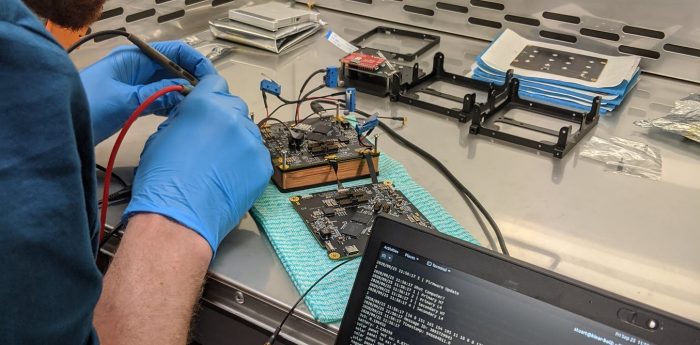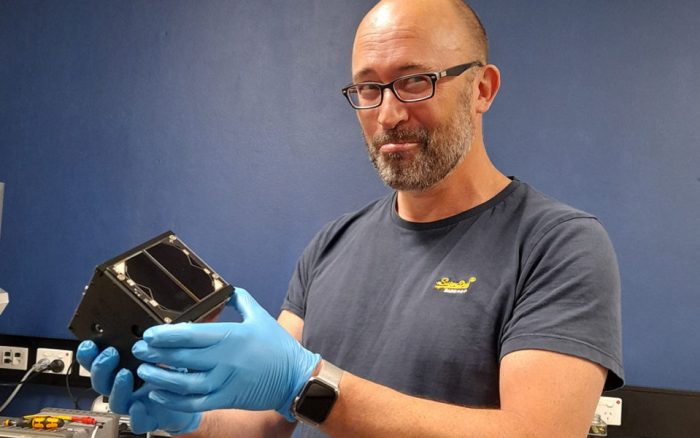Western Australia’s (WA) first-ever home-grown spacecraft is ready to take to the skies!
As part of the Binar Space Program, the Binar-1 CubeSat, designed, coded and built by staff and students from Curtin University’s Space Science and Technology Centre (SSTC), is scheduled for launch from Cape Canaveral, Florida on a SpaceX rocket on August 28. It will then be deployed from the International Space Station (ISS) four to six weeks later to go into Earth’s orbit.
This marks the start of WA’s own space program, representing a monumental leap into space for the space research community in WA.
Small build, huge ambition.
Binar-1, named after the Noongar word for “fireball”, is a CubeSat. Think of a large 10-centimetre Rubik’s cube – but an advanced, highly integrated version covered by solar panels, where all the systems are compacted into a single multi-layer circuit board.
Some things get smaller and smaller as technology advances. (Think transistors on computer chips). And so do satellites. Don’t be fooled by how petite Binar-1 is – with modern technology it’s now possible to make cost-effective satellites with really small core systems, allowing researchers to focus more on the science.

Curtin space researcher working on the Binar-1 CubeSat. Photo credits: Curtin University
The mission serves as a technology demonstration to prove that the satellite can operate in orbit, thereby taking the first step towards future missions to send CubeSats to the Moon.
Binar-1 is equipped with two cameras, with two main objectives. The first is to look down and photograph WA from space, enabling researchers on the ground to ascertain the performance of the instruments. The second is to look up and image stars, which proves the capability of star-tracking – a vital component of navigation required for future Moon missions.
It will be followed by six more missions over the next 18 months, with each developing different technologies so that the spacecraft built will be more technically sophisticated.
WA joins the space race.
Curtin University’s SSTC is also involved in carrying out a feasibility study for its Binar Prospector mission as part of the Australian government’s Moon-to-Mars program, a partnership with NASA on future space endeavours.
Involving two six-unit CubeSats making close-up observations of the Moon, the mission is slated for a 2025 launch, leveraging WA expertise in geophysical exploration to search for water ice on the Moon.
Apart from all the great science that will follow, developing home-grown technology will also benefit Australia economically. It’ll enable the Australian space industry to reduce its reliance on expensive imported components, allowing it to stand on its own two feet while aiming for the stars.

Curtin University’s Professor Phil Bland, who’s also the director of the SSTC, holding the Binar-1 CubeSat. Photo credits: Curtin University
“It will inspire our young people and engage them directly in a bold project of space exploration,” says Professor Phil Bland, director of Curtin’s SSTC, who’s also involved in many other space research projects such as NASA’s asteroid sample return mission. “With the Binar Space Program, our goal is to build a future where WA students, trained at WA universities, find jobs in a WA space industry, building WA spacecraft.”
If you’re in Perth, catch the launch (Aug 28 3:37 pm AWST) live at Yagan Square’s Digital Tower. Unable to make it? You can also stream it live here!
Team DUG is extremely excited to witness the involvement of brilliant WA researchers in the space race. All the best to Australia’s space community – reach for the stars!




































